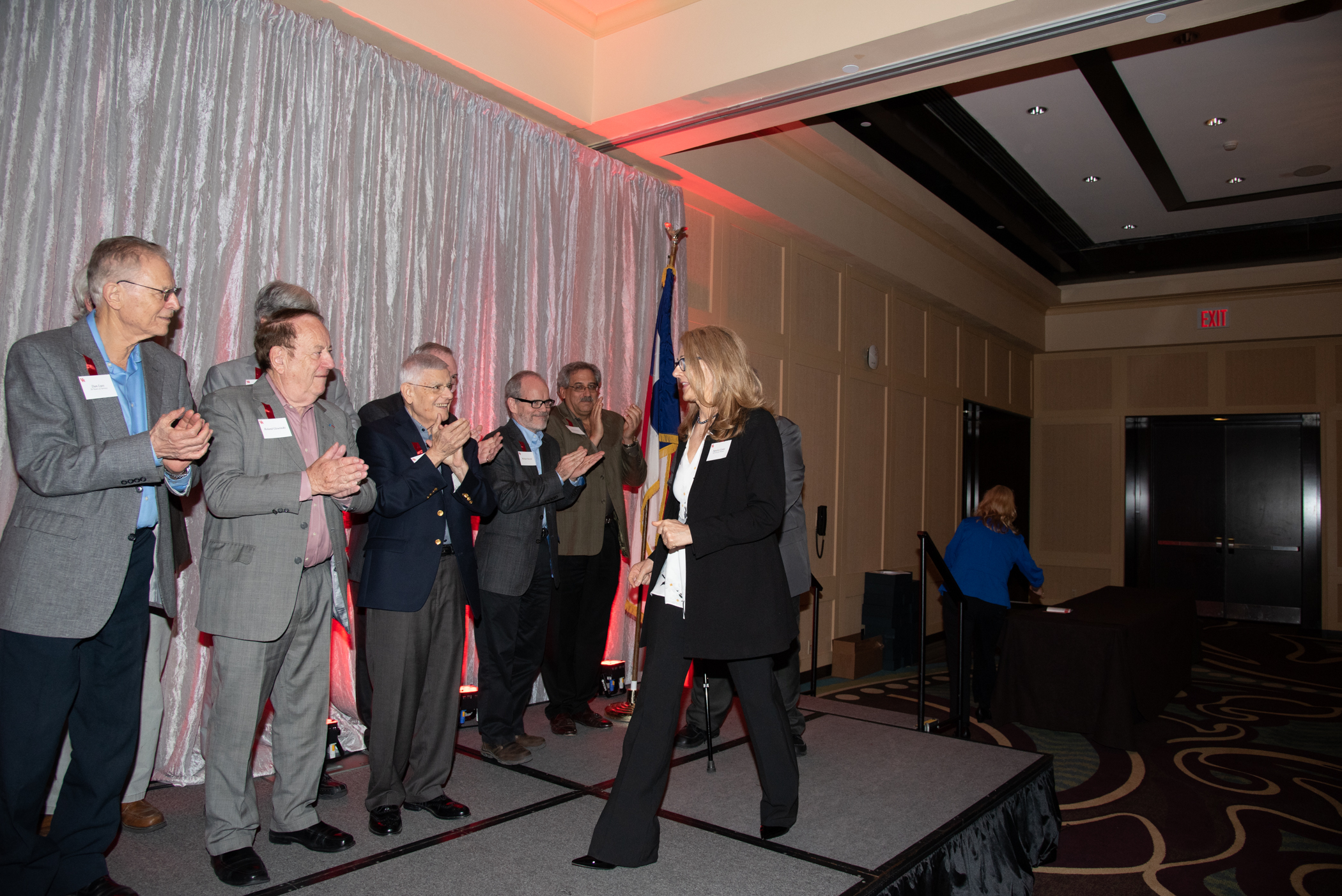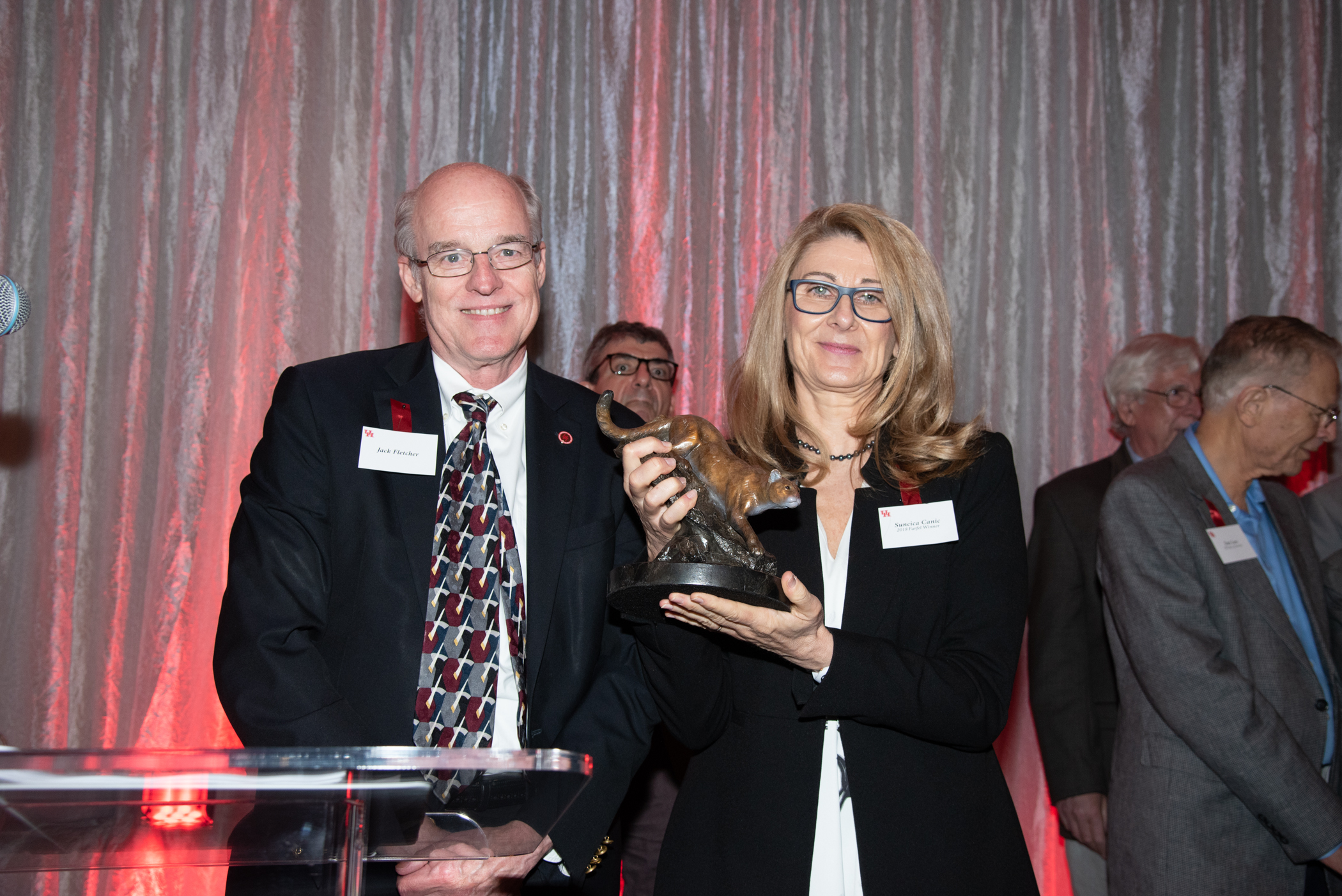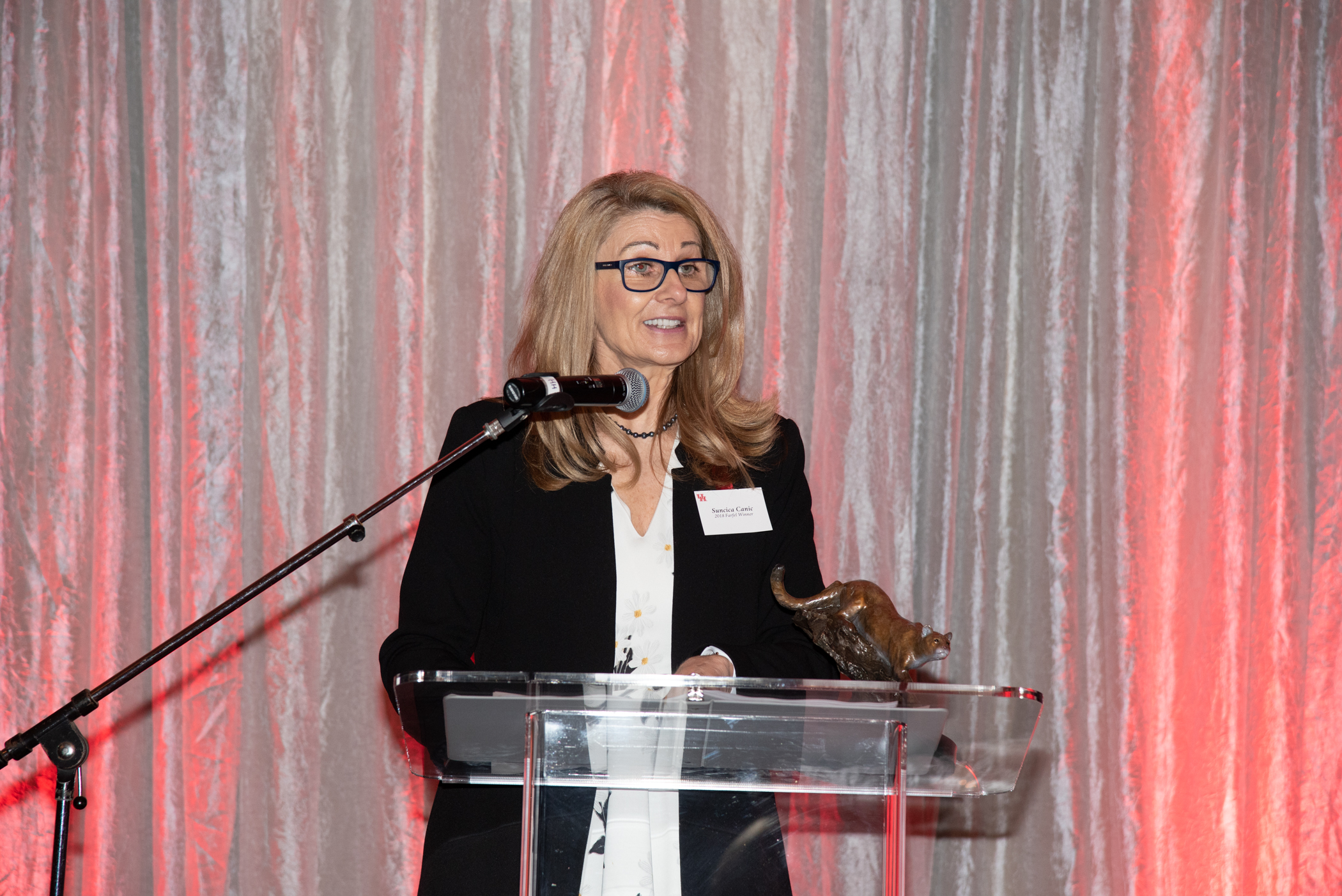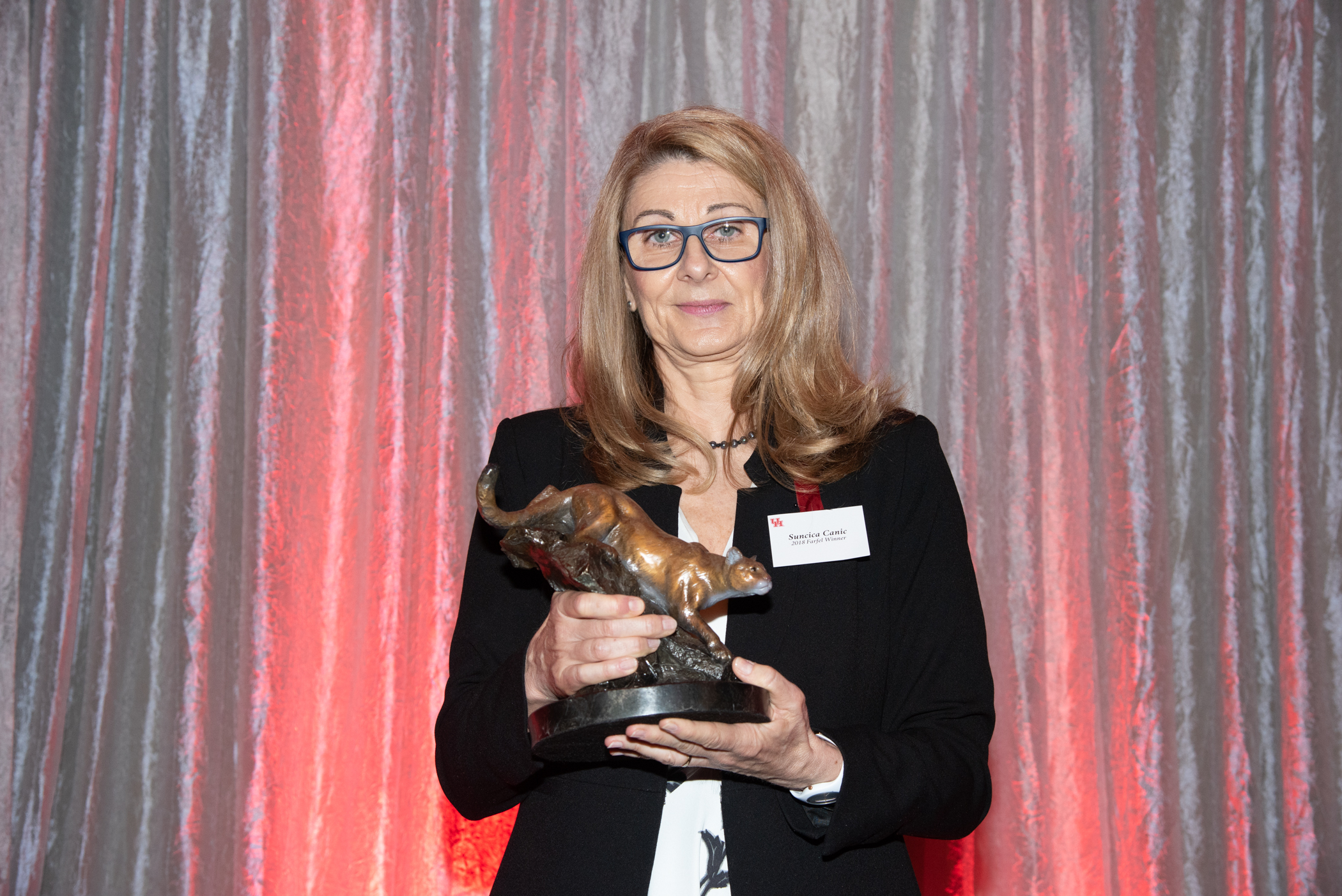Canic’s Research Merges Applied Mathematics with Biomedical Applications
Suncica Canic, Hugh Roy and Lillie Cranz Cullen Distinguished Professor of Mathematics, has a long track record of high-impact research. As an applied mathematician with expertise in partial differential equations and computational fluid dynamics, her work has led to breakthroughs in both mathematical theory and biomedical applications.
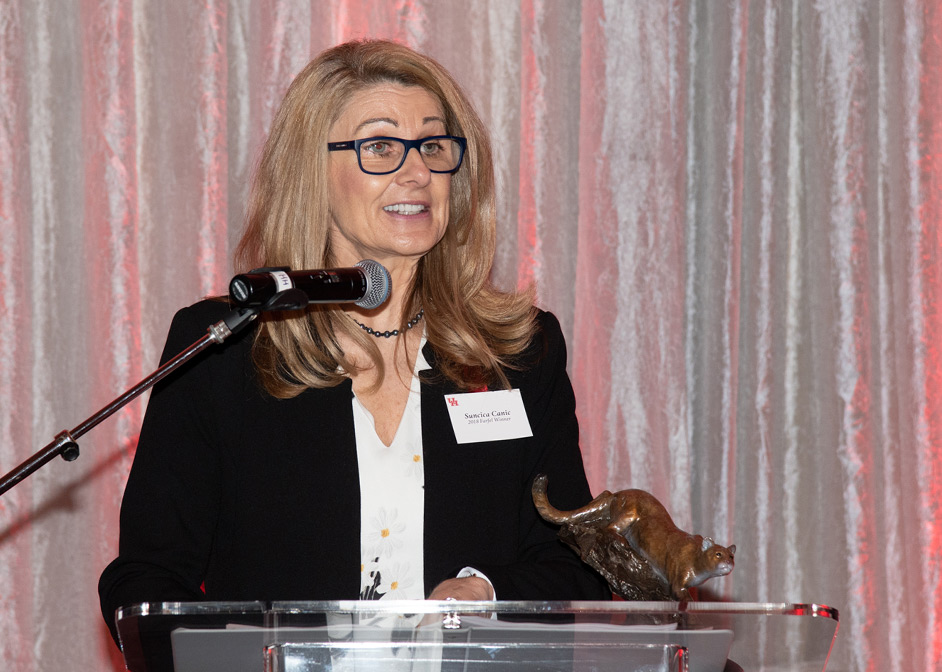
These achievements were recognized with the University of Houston’s highest faculty honor, the Esther Farfel Award. The Farfel Award, established in 1979, is awarded to faculty who demonstrate excellence in teaching, research and service.
As one recommender noted, Canic’s “outstanding research, excellence in teaching and mentoring, and high level of her service positions her as a singularly excellent candidate.”
Improving Procedures through Math
Canic started her career in basic problems in mathematics, namely hyperbolic conservation laws. After arriving at UH, with its proximity to the Texas Medical Center, she attended a party, where she met several cardiologists.
After talking to them about their work, “I realized their procedures could be improved by using math that I was familiar with,” Canic said. One collaboration led to another, where her skills proved critical for solving a long-standing issue within cardiovascular medicine, which was the durability of cardiovascular stents.
Modeling Fluid Flow and Heart Anatomy
In medicine, a stent is a tube inserted into a vessel to keep the passageway open, in order to strengthen distended or weakened walls. Canic, along with her collaborators, investigated stents used to replace the trans-aortic valve found in the heart.
“If this valve becomes calcified, or can’t close properly for some reason, there is backflow of blood within the heart,” Canic said. “Long-term, this can lead to heart failure and death.”
Canic, along with her collaborators, was able to model the stresses imposed on these stents by blood flow, as well as the interaction between blood flow and cardiovascular tissue. Based on their calculations, they designed a better stent that accounted for the physical constraints imposed by the heart’s anatomy, as well as the stresses imposed by blood flow.
Developing New Math Theories to Solve Practical Applications
“Developing these applications also required the development of new mathematical theories,” said Canic. She credits her Ph.D. co-advisor, National Academy of Science member and National Medal of Science recipient James Glimm, for teaching her that her skills as a mathematician could be used to solve real-life problems.
In addition to the practical applications, this research also developed new mathematical theories for understanding blood flow and the interactions between structure and fluid dynamics.
As one recommender noted, “She is one of those rare mathematicians who have produced mathematical results that have been used in the production of medical devices.”
Community Service: Congressional Briefing on Impact of Math Research
In addition to her research, Canic is a leader within the science community. On several occasions, she was invited by the American Mathematical Society to provide congressional briefings on the impact of mathematical research. She has also served on study sections for the National Institutes of Health, lectured at international conferences, and served on numerous committees. In 2014, she was elected as a Fellow of the Society for Industrial and Applied Mathematics, for “contributions to the modeling and analysis of partial differential equations motivated by applications in the life sciences.”
As one recommender wrote, she has a “record of sustained and generous service to the computation biology / biomathematics research community,” while another recommender observed that “people are only asked to serve on such committees because they are viewed as leaders in their field.”
“I am very honored to receive this award,” Canic said. “Within the math department, we have a very strong research group in computational fluid dynamics. This award recognizes that.”
-Rachel Fairbank, College of Natural Sciences and Mathematics
Sunčica Čanić, Hugh Roy and Lillie Cranz Cullen Distinguished University Chair in the College of Natural Sciences and Mathematics, received the 2018 Esther Farfel Award during the 2018 Faculty Excellence Awards. The award is the highest honor bestowed on faculty at the University.
A complete listing of all faculty award recipients is now available online.
For a complete list of UH Mathematics Faculty award recipients, please visit this link.
Photos from the Awards Dinner:

